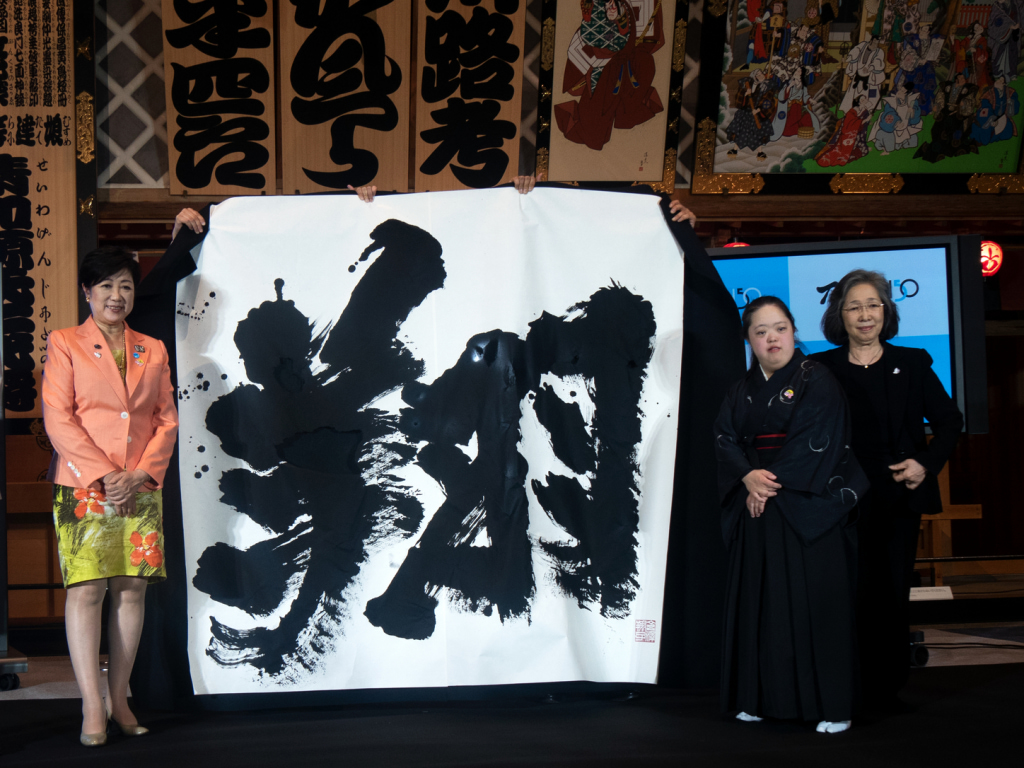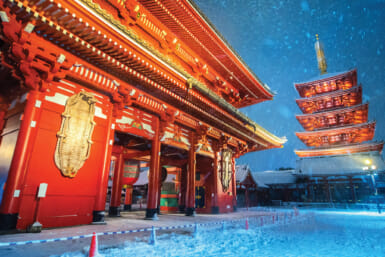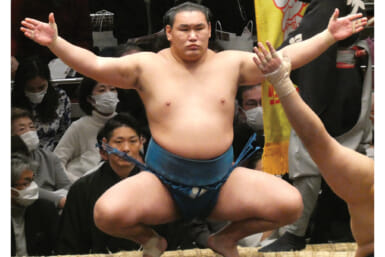Standing before a life-size model of Nihombashi’s Nakamuraza Theatre on the newly remodeled sixth floor of the Edo-Tokyo Museum, calligrapher Shoko Kanazawa sweeps a large brush over the white canvas on the floor.
This year marks the 150th of the renaming of Edo to Tokyo, and with Tokyo Governor Yuriko Koike looking on, Kanazawa, dressed in a black hakama, helped write a message commemorating the anniversary, and celebrating Tokyo’s future.
“Congratulations, Tokyo,” said Kanazawa, standing over the finished piece. “Let’s soar together.”
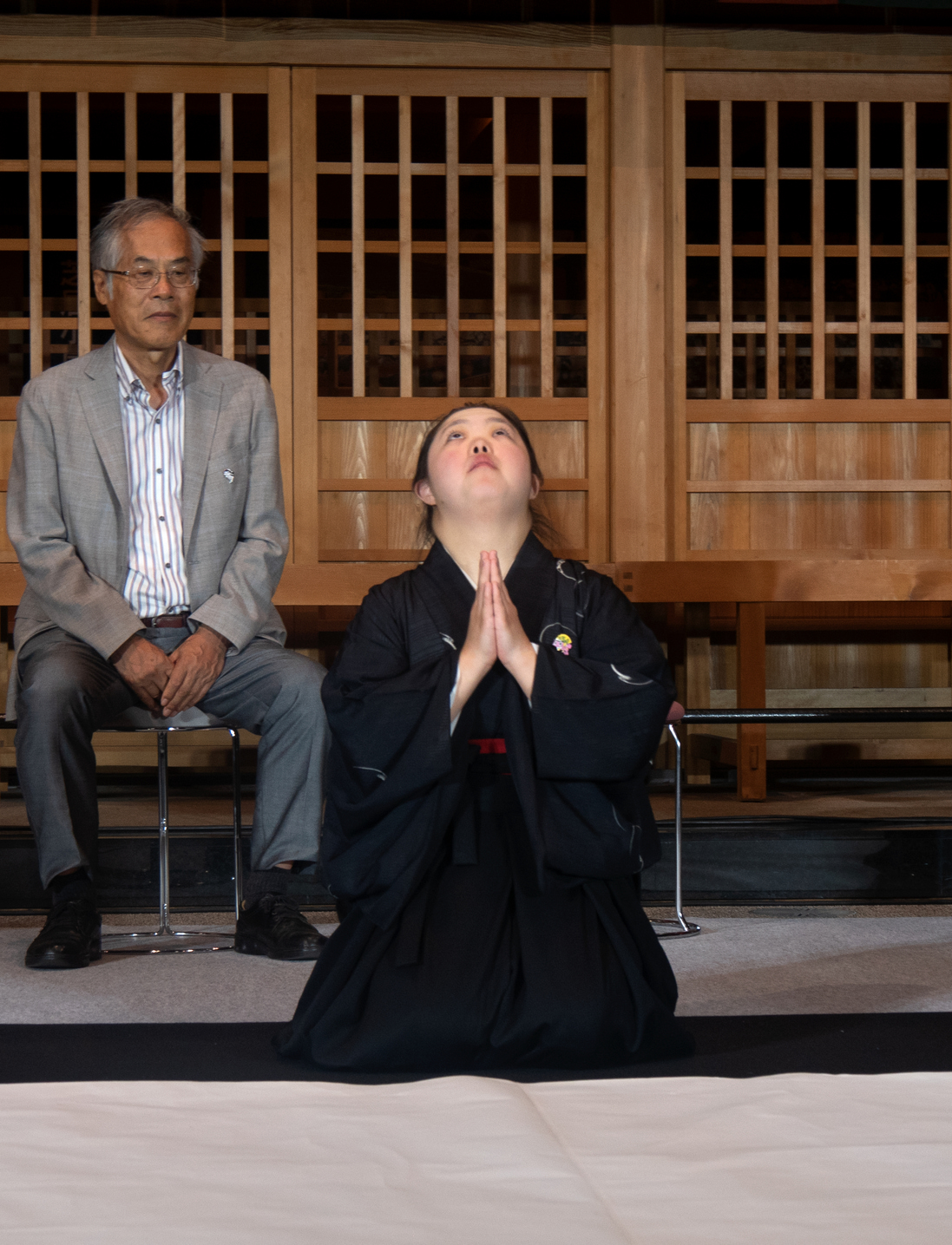
Shoko Kanazawa prepares to begin calligraphy performance on Aug 7, 2018 at the Edo-Tokyo Museum.
Tokyo Celebrates 150 Years
The Edo-Tokyo Museum reopened in March after a six-month renovation project, and its first special exhibition, opened August 7, displays photographs, videos and maps made throughout “new” Tokyo’s history. The exhibition is also a rare opportunity to see city plans and projects that were never implemented.
Edo was the seat of power for the Tokugawa Shogunate, which ruled Japan from 1603 to 1868. Once a small fishing village, by 1721 Edo was the largest metropolis in the world with an estimated population of 1 million. The imperial family resided in Kyoto, with little authority over the country they ruled.
By the 1860s the Shogunate was under several threats and representatives of foreign powers sought to increase their influence on Japan. The untimely death of Emperor Komei in 1867 led to the succession of Emperor Meiji, just a teenager at the time.
With the young crown prince taking over, pro-imperialist lords took the opportunity to seize power from the Tokugawa Shogunate. Edo Castle was handed over to the imperial family, and on July 17, 1868, an imperial edict was issued declaring that the city of Edo would be renamed Tokyo, or “eastern capital.”
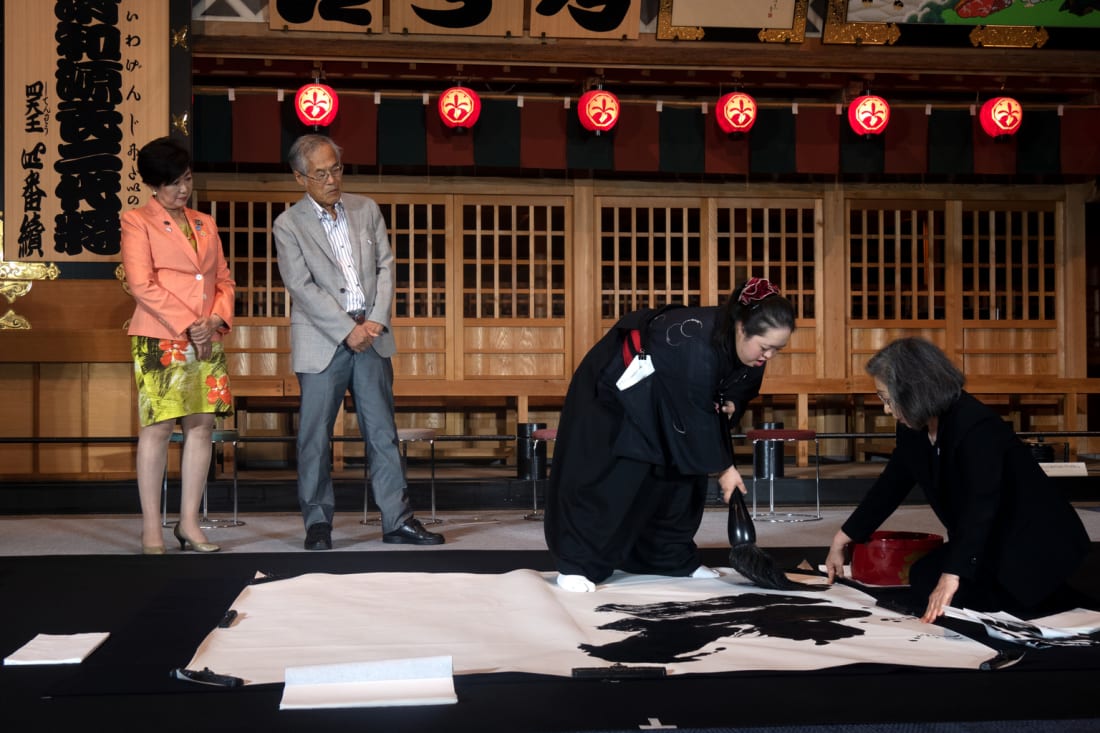
Kanazawa’s piece delivered the message, “Let’s soar together.”
Tokyo’s Legacy and Future
Over the last 150 years disaster and war have wrought great damage throughout Tokyo’s streets. During her remarks at the Edo-Tokyo Museum, Governor Koike said since the end of World War II Tokyo has developed into a dynamic city that will soon host the 2019 Rugby World Cup and the 2020 Summer Olympics.
“Thanks to everyone’s efforts we created the Tokyo that exists now. That story is tough, and heartwarming,” said Koike. “For another 150 years, together we will soar.”
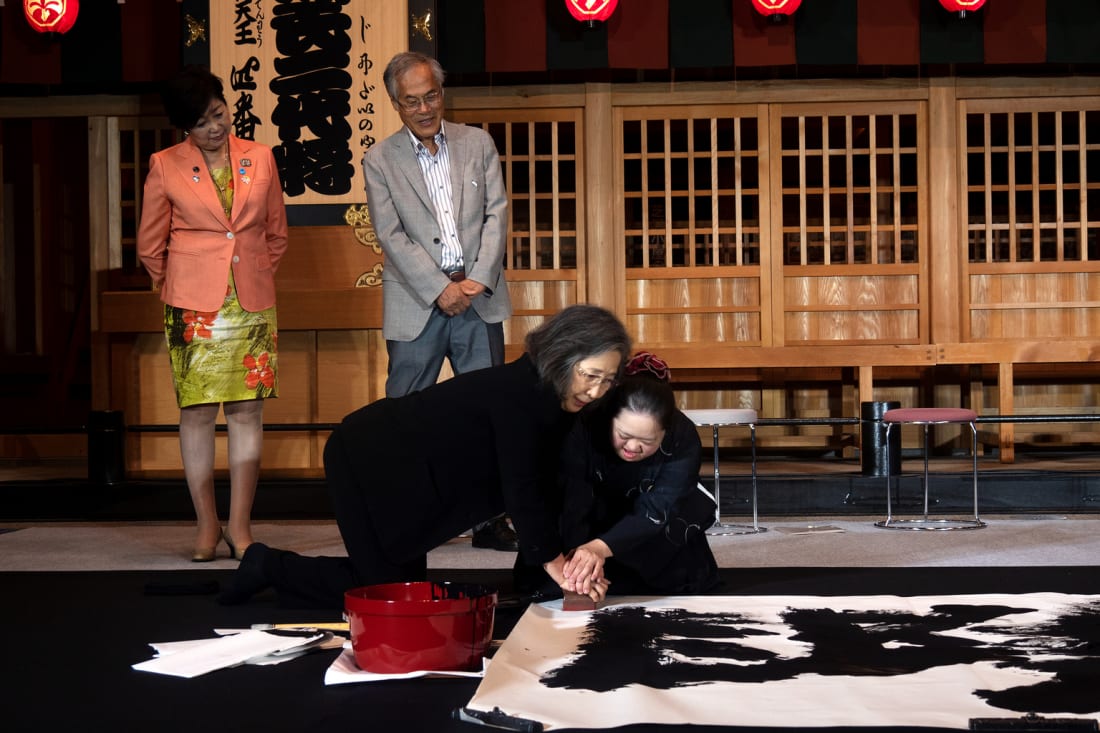
Kanazawa finished the piece with help from her mother, Yasuko Kanazawa.
One of Japan’s Most Acclaimed Calligraphers
Born with Down’s Syndrome, Shoko Kanazawa, 33, is arguably the most famous calligrapher in Japan and possibly the world. Kanazawa began learning shodo calligraphy at age 5 under her mother’s tutelage. She held her first personal exhibition at age 20 at the Ginza Shoro Gallery and has made more than 1,000 exhibitions and other public appearances in the past decade.
There are four museums dedicated exclusively to her calligraphy. The Emperor and Empress of Japan hold Shoko’s work in their private collection. Her calligraphy has been featured in the title card of NHK’s 2012 historical drama, Taira no Kiyomori , and she performed at the opening ceremony of the National Sports Festival of Japan. Kanazawa is a visiting associate professor at Nippon Fukushi University.

